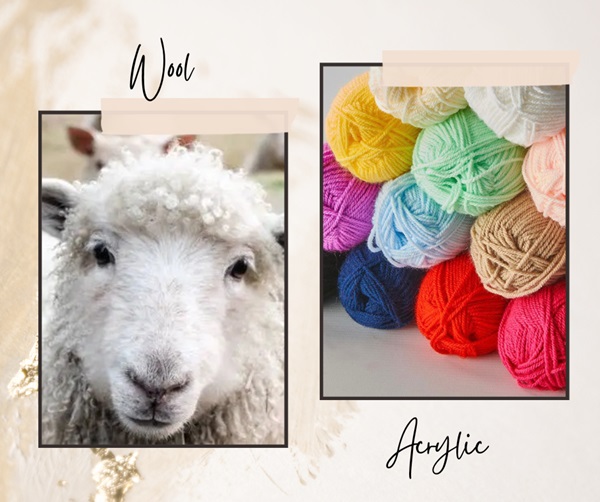
WOOL vs ACRYLIC
What Should You Choose?
Whether you're a seasoned knitter, a beginner crocheter or someone exploring yarn for DIY projects, you've likely come across the age-old question: Acrylic yarn or pure wool? Each has its own strengths and weaknesses, and the right choice depends on your needs, values, and the nature of your project.
Let's break down the key differences to help you decide.
1. Material Origin
•Pure Wool: A natural fibre from sheep. It's renewable, biodegradable and has been used for centuries for warmth and durability.
•Acrylic Yarn: A synthetic fibre made from polymers created in a lab to mimic the softness of wool while offering different properties.
2. Texture & Softness
•Wool: Offers a soft but often slightly coarse texture (especially untreated wool). Higher-end options like Merino wool are incredibly soft and luxurious.
•Acrylic: Typically soft, especially in budget and baby yarns. However, cheaper acrylics can feel plasticky or stiff.
3. Warmth & Breathability
•Wool: Naturally insulating and breathable. It regulates body temperature and retains warmth even when wet.
•Acrylic: Less breathable and can trap heat. It's warm but can make you sweat because it doesn't wick moisture as effectively as wool.
4. Care & Maintenance
•Wool: Requires delicate care—often hand-washing and air drying. Some types (like superwash wool) are machine-washable, but untreated wool can felt or shrink.
•Acrylic: Easy to care for. It's machine-washable, resistant to shrinking or felting and dries quickly. Ideal for busy households or kids' items.
5. Durability
•Wool: Long-lasting when cared for properly. However, it can pill, felt, or become moth-damaged.
•Acrylic: Very durable, resistant to pests and fading. It holds up well to heavy use but can stretch and pill over time.
6. Cost
•Wool: Generally more expensive due to its natural origin and harvesting process.
•Acrylic: Budget-friendly and widely available, making it ideal for large projects or beginners.
7. Eco-Friendliness
•Wool: Natural and biodegradable. Ethically sourced wool supports sustainable agriculture.
•Acrylic: Petroleum-based and not biodegradable - a problem for landfill sites.
8. Allergies & Skin Sensitivities
•Wool: Some people are allergic or sensitive to lanolin in wool, which can cause itchiness or irritation.
•Acrylic: Hypoallergenic, making it a safer choice for sensitive skin—especially for baby garments or hospital donations.

Final Thoughts: Which Should You Choose?
•Choose wool if you're looking for natural warmth, sustainability, and are willing to invest a little more care.
•Choose acrylic if you want a budget-friendly, easy-care yarn for everyday use, gifts, or experimenting.
In reality, many yarn artists use both—picking the fibre that fits the function. There's no one-size-fits-all answer and sometimes the best projects come from blended yarns, offering a balance between natural and synthetic benefits.
So, grab your needles or hook, pick the right yarn for you, and create something wonderful.
Thanks for reading our BLOG
